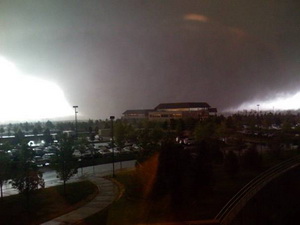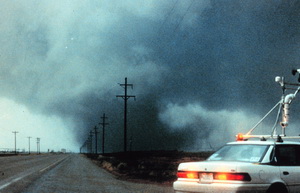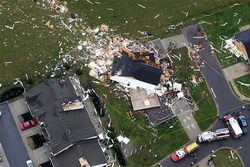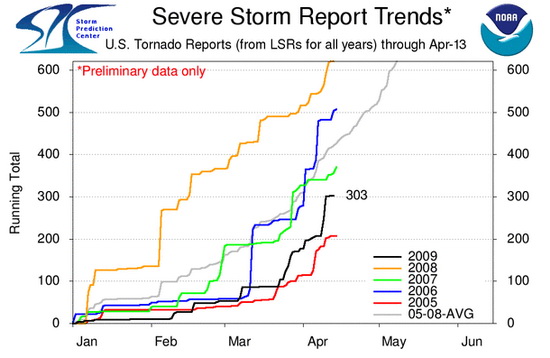
A very eventful week in Denver weather history. Four tornadoes are mentioned and many reminders that winter may not be over just quite yet.
From the National Weather Service:
1-5
IN 1898…SNOWFALL TOTALED 15.5 INCHES IN DOWNTOWN DENVER. MOST OF THE SNOW…6.2 INCHES…FELL ON THE 3RD. MOST OF THE SNOW MELTED AS IT FELL. THE GREATEST SNOW DEPTH ON THE GROUND WAS ONLY 2.5 INCHES ON THE 3RD AT 8:00 PM. THIS WAS THE ONLY SNOWFALL DURING THE MONTH. NORTHEAST WINDS WERE SUSTAINED TO 22 MPH ON THE 1ST.
2-3
IN 1979…HEAVY RAIN CHANGED TO SNOW ON THE 2ND. SNOWFALL TOTALED 3.9 INCHES AT STAPLETON INTERNATIONAL AIRPORT… WHERE NORTHWEST WINDS GUSTED TO 26 MPH. THE GREATEST DEPTH OF SNOW ON THE GROUND WAS ONLY 1 INCH AT MIDDAY ON THE 2ND DUE TO MELTING. TOTAL PRECIPITATION FOR THE 2 DAYS WAS 1.65 INCHES
2-4
IN 1987…A SLOW MOVING STORM BROUGHT RAIN…WIND…AND SNOW TO METRO DENVER. RAINFALL TOTALED 1.04 INCHES AT STAPLETON INTERNATIONAL AIRPORT WHERE NORTH WINDS GUSTED TO 48 MPH ON THE 3RD. THE FOOTHILLS RECEIVED 5 TO 10 INCHES OF SNOW
2-5
IN 2001…A VERY SLOW MOVING PACIFIC STORM SYSTEM BECAME PARKED NEAR THE FOUR CORNERS REGION…WHICH ALLOWED HEAVY SNOW TO DEVELOP ABOVE 6500 FEET IN THE FOOTHILLS WITH A MIX OF RAIN AND SNOW OVER LOWER ELEVATIONS OF METRO DENVER. SNOWFALL TOTALS INCLUDED: 21 INCHES ATOP CROW HILL AND AT IDAHO SPRINGS; 19 INCHES NEAR BLACKHAWK; AND 18 INCHES IN COAL CREEK CANYON…GENESEE…AND 11 MILES SOUTHWEST OF MORRISON. SNOWFALL TOTALED 6.2 INCHES AT THE SITE OF THE FORMER STAPLETON INTERNATIONAL AIRPORT. PRECIPITATION (RAIN AND MELTED SNOW) TOTALED 2.09 INCHES AT DENVER INTERNATIONAL AIRPORT WHERE NORTH WINDS GUSTED TO 30 MPH ON THE 2ND.
Continue reading May 3 to May 9 – This week in Denver weather history








